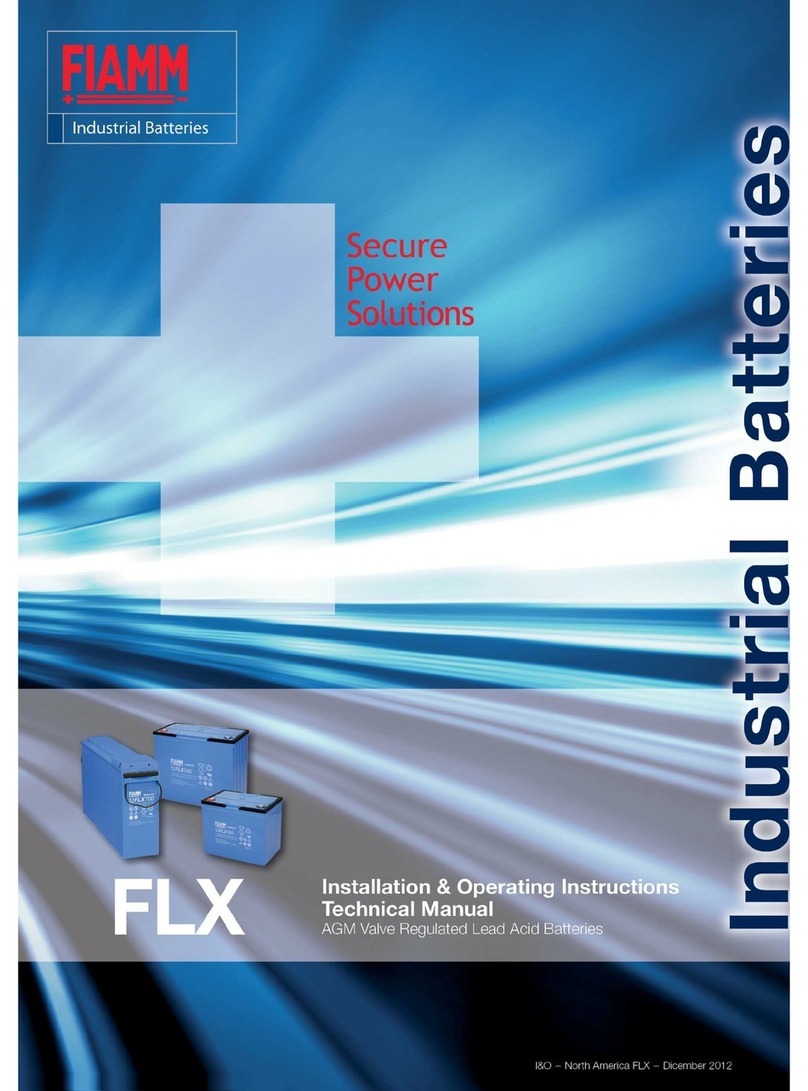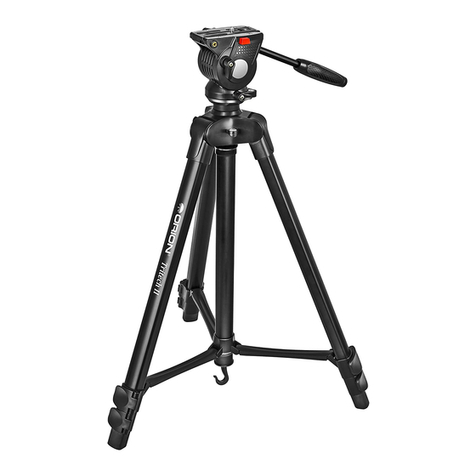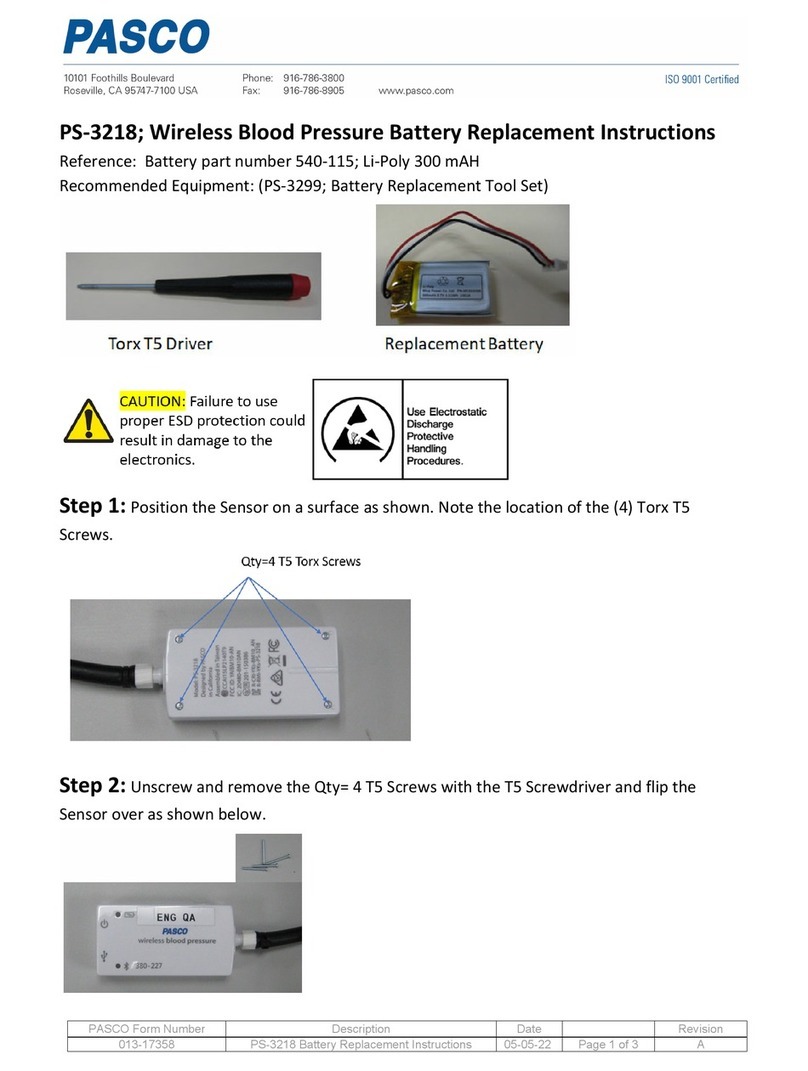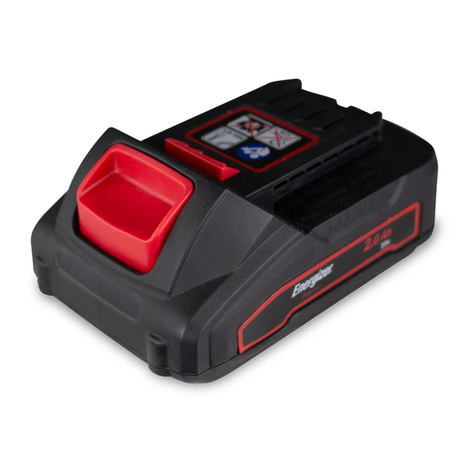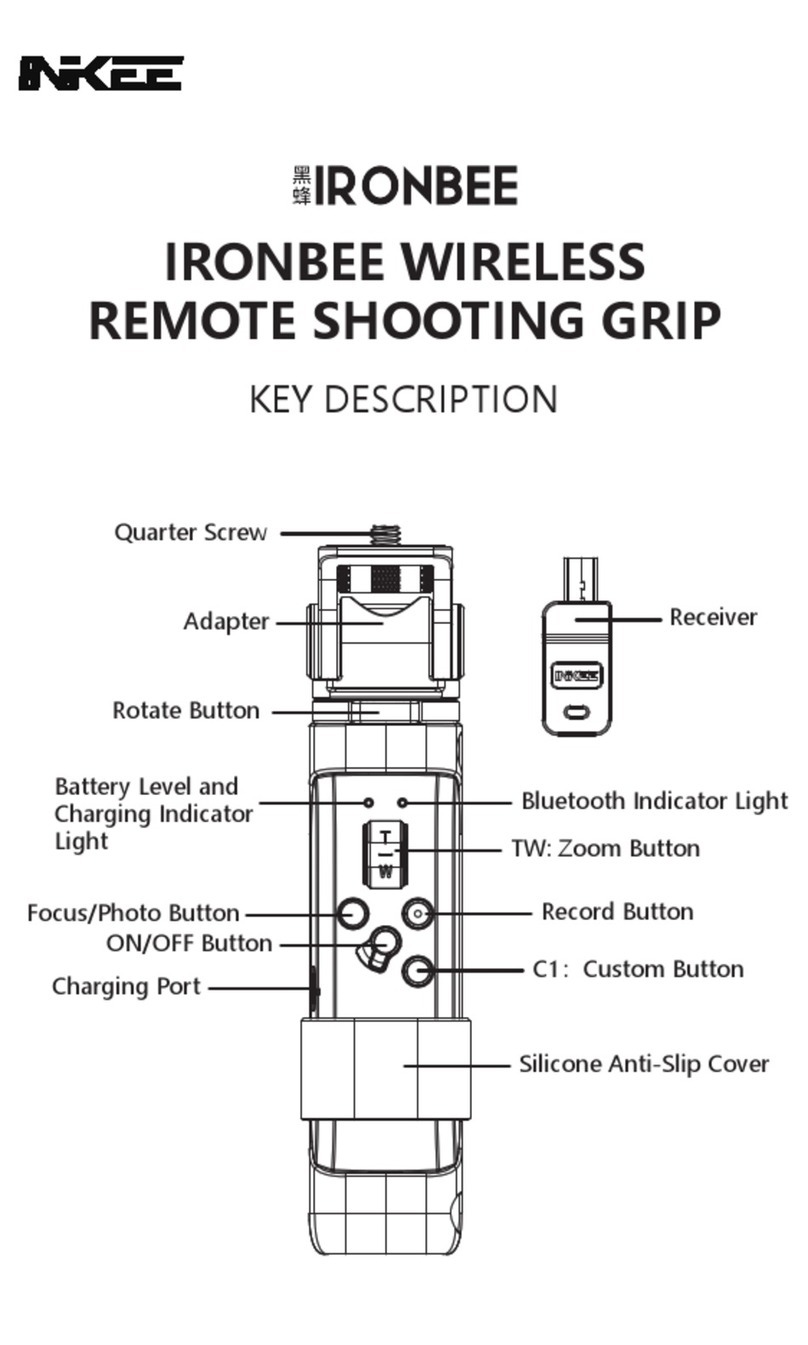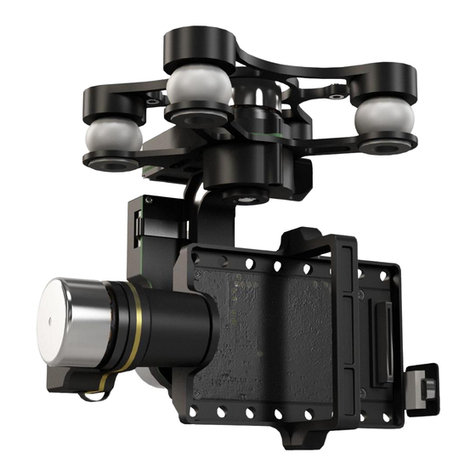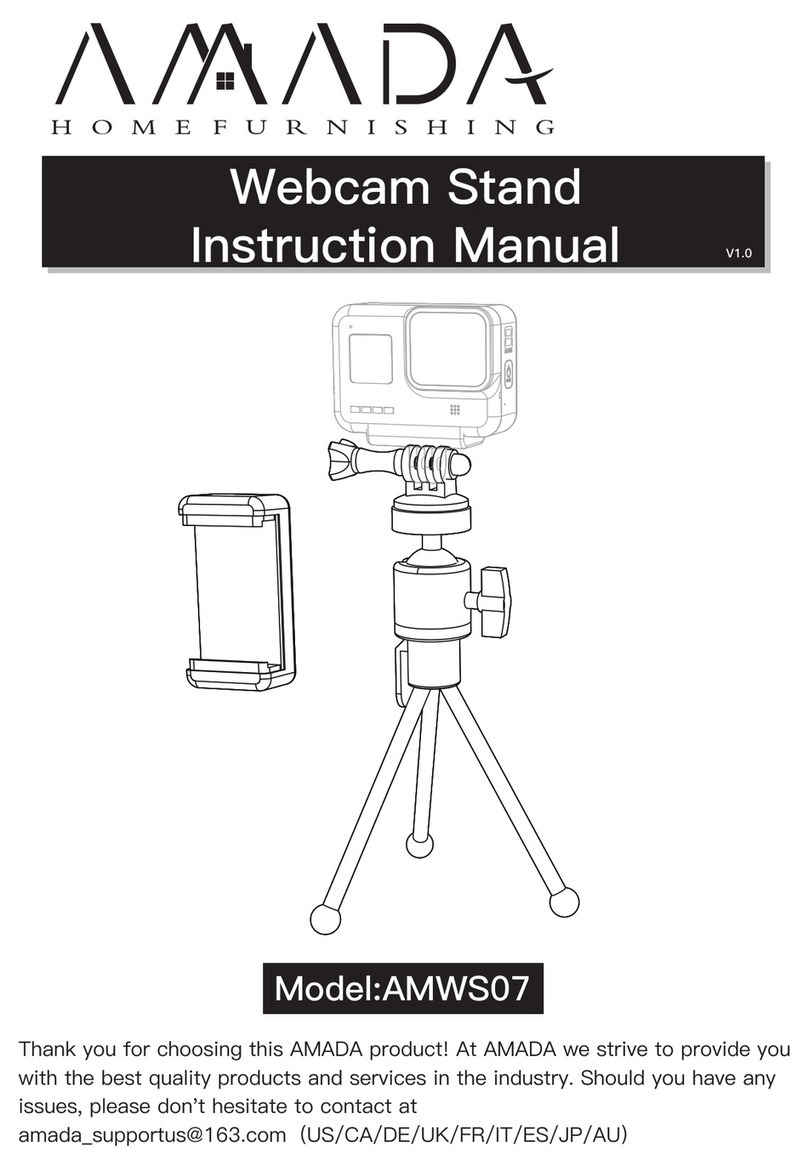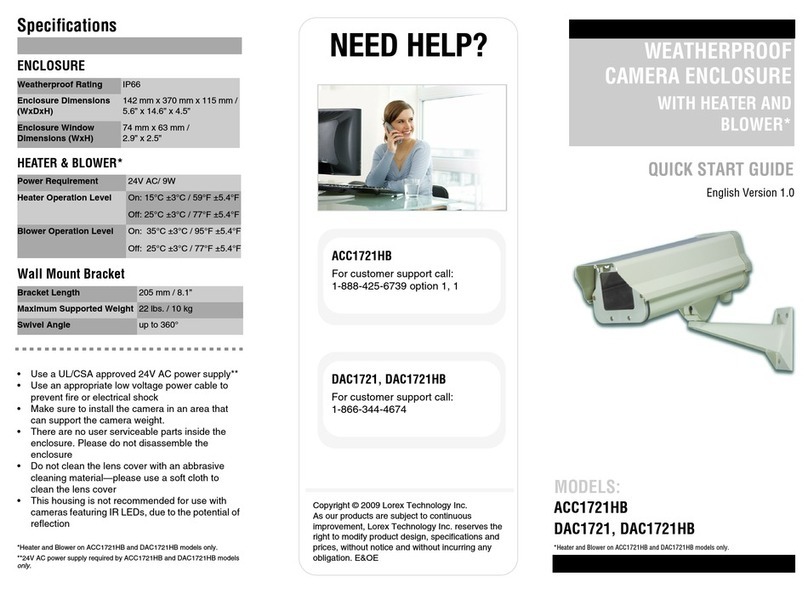Fiamm SODIUM SoNick 48TL160H Manual

FIAMM SoNick I&O - 48TL160H rev.0–July 2013
pag.1

FIAMM SoNick I&O - 48TL160H rev.0–July 2013
pag.2
Index
1 SAFETY.......................................................................................................................................4
1.1 Purpose................................................................................................................................4
1.2 Safety Precautions..............................................................................................................4
2 GENERAL INFORMATION .........................................................................................................4
2.1 Introduction .........................................................................................................................4
2.2 Unpacking And Inspections................................................................................................4
2.3 Handling...............................................................................................................................5
2.4 Storage.................................................................................................................................5
2.5 Battery Return and Disposal...............................................................................................5
2.6 Packaging ............................................................................................................................5
2.7 Transportation.....................................................................................................................6
3 BATTERY INSTALLATION.........................................................................................................7
3.1 Tools and Hardware Required............................................................................................7
3.2 Battery Layout and Mounting Orientation .........................................................................7
3.3 Battery Front Panel .............................................................................................................8
3.4 Power Cable Connection ....................................................................................................9
3.4.1 Individual connection.......................................................................................................9
3.4.2 Parallel Connection........................................................................................................10
3.5 Data Cable Connection .....................................................................................................11
3.5.1 Com port pin-out ............................................................................................................11
3.5.3 Alarm Dry contact configuration...................................................................................11
3.5.4 Single battery installation..............................................................................................12
3.5.5 Multiple batteries installation ........................................................................................12
3.6 Battery activation ..............................................................................................................13
4 BATTERY IN OPERATION .......................................................................................................14
4.1 Battery Warm-Up...............................................................................................................14
4.2 Battery Charging ...............................................................................................................14

FIAMM SoNick I&O - 48TL160H rev.0–July 2013
pag.3
4.3 Floating..............................................................................................................................14
4.4 Discharging and Rated Capacity......................................................................................15
4.5 Battery Cool Down ............................................................................................................15
4.6 Battery Internal Resistance ..............................................................................................15
4.7 Maintenance Free..............................................................................................................15
5 TECHNICAL INFORMATION....................................................................................................15
5.1 FIAMM SoNick Battery Description..................................................................................15
5.1.2 BMS functions ................................................................................................................16
5.2 Battery Specification.........................................................................................................16
5.3 Battery Labels....................................................................................................................17
5.3.1 Front label.......................................................................................................................17
5.3.2 Top label..........................................................................................................................17
5.3.2 Side BMS label................................................................................................................18
5.4 Battery Alarms...................................................................................................................18
5.4.1 Warnings/alarms list.......................................................................................................19
5.5 Service Life Definition.......................................................................................................20
5.6 Extended Outages.............................................................................................................20
5.7 Light Emitting Diodes (LED’s) explanation......................................................................20
5.8 Display ...............................................................................................................................21
5.9 Safe Technology................................................................................................................21
5.10 Battery Protection ...........................................................................................................21
5.10.1 Electrical Protection.....................................................................................................21
5.10.2 Thermal Protection.......................................................................................................22
5.10.3 Mechanical Protection..................................................................................................22
5.10.4 Reliability ......................................................................................................................22
5.11 Technical Assistance......................................................................................................22
Appendix .....................................................................................................................................22

FIAMM SoNick I&O - 48TL160H rev.0–July 2013
pag.4
1 SAFETY
1.1 Purpose
This manual provides information required to install and operate the FIAMM SoNick 48TL160H
battery.
Anyone involved in handling, installing or using the FIAMM SoNick 48TL160H battery must read
and understand this manual.
1.2 Safety Precautions
To prevent damages to the batteries and personal injuries, following safety instructions need to be
followed all the times:
Do not install the battery if you notice physical damage
Do not place the battery on its power terminals, with the front plastic cover facing down or
upside down
Do not pack the battery when it is hot
Do not expose the battery to temperatures above 90°C (194°F) or below -40°C ( 40°F)
Do not allow metal objects to rest on the battery or to fall across the terminals
Remove rings or metal wristbands when working with the battery
Use insulated tools to install the battery
Use all the handles when handling the battery
Unlike traditional batteries, this Sodium Nickel battery can be charged or discharged only
when the internal temperature reaches the operative value. Whenever the internal
temperature is below, the battery acts as a passive device.
Before use, be sure to fully understand the battery functionality described in this manual.
2 GENERAL INFORMATION
2.1 Introduction
The 48TL160H is a 48 Volt –160Ah complete battery system designed for stationary applications.
This battery, assembled with four strings of Sodium-Nickel cells in a 20 cell series configuration, is
provided with internal electric heaters to achieve and maintain the internal working temperature of
265°C. The thermal insulation of the battery is such that, with an internal temperature of 265°C, the
surface temperature of the enclosure is just a few degrees above the environment. The battery
enclosure has a good thermal insulation thanks to the
vacuum between the inner and the external box.
The battery is provided with an electronic controller (BMS) which manages all the battery functions
and ensures a reliable and safe operation.
2.2 Unpacking And Inspections
FIAMM SoNick carefully tests and inspects the battery before shipment.
Upon receiving a shipment of batteries, open the wooden crate box and check the battery and
hardware against the packing list.
Report any damage immediately to the carrier if the shipment shows signs of damage in transit.
Also notify your FIAMM SoNick customer service representative.

FIAMM SoNick I&O - 48TL160H rev.0–July 2013
pag.5
2.3 Handling
The use of non-conductive tools or tools rendered non-conductive by means of an insulating
material is highly recommended.
High energy batteries should always be handled carefully to avoid the possibility of creating a short
circuit. In some circumstances, when in operation, the battery surface may be hot.
Battery handles are for hand carrying only, do not sling from the handles. Use an appropriate
battery lifting harness for hoisting the battery. The battery handles are to be used to remove the
battery from its original packaging and to securely place the battery in its operating location.
Always use all handles when handling the battery.
Never push or pull the battery by applying force to the Battery Management System.
Personnel should inspect the nearby environment where batteries will be handled to identify and
eliminate all potential sources of electrical and physical damage to the batteries. Avoid conditions
that could result in short-circuits, overheating, puncture or crush.
Figure 1
2.4 Storage
The suitable environment for battery storage in general is in a cool, dry, and well-ventilated place.
Sodium Nickel batteries should be stored in an identified area of the warehouse equipped with
Class ''D'' fire extinguishers. The battery can be stored for any length of time in the cold state
without changing its characteristics or state of charge.
The battery has an extremely high resistance in the cold state and even a very low current can
damage the battery when cold. Do not try to disassemble the battery management system (BMS)
and apply any load or perform any measurement using the internal terminals of the battery,
especially when it is in cold state.
The storage temperature should be between –40°C and +60°C.
2.5 Battery Return and Disposal
A Sodium Nickel battery must be transported cold and if possible discharged.
Do not burn or dispose of the battery. End of life or defective batteries are to be returned to FIAMM
SoNick, where recycling and/or disposal of the different parts will be performed.
Notify FIAMM SoNick customer service prior to returning the battery.
2.6 Packaging
The 48TL160H battery is shipped cold and completely discharged in a wooden crate fixed with
straps to avoid any risk of uncontrolled movement or drops and surrounded by a protective foam
cushion (fig.2, dimensions in mm).
In case of battery return, battery should be packed in the original wooden box, only when turned off
and cold. Battery with a heavily damaged external case should be wrapped with polyethylene
sheets before of the packing, to avoid the risk of release of material or odors.

FIAMM SoNick I&O - 48TL160H rev.0–July 2013
pag.6
The package should include the relevant safety information for the transport: please contact
FIAMM SoNick for the details.
Figure 2
2.7 Transportation
Sodium Nickel batteries are classified as dangerous goods (hazardous materials) for transportation
purposes. Consequently, anyone who is engaged in shipping this product must comply with all the
rules and regulations, covering the shipping of dangerous goods
UN number:
3292 “Batteries or cells containing sodium”
Class:
4.3 “Water reactive substances” In contact
with water produces flammable gas
Packing group:
Il Materials of medium danger
Packing instructions:
433 for air shipment
P408 for road shipment
IMDG for sea shipment
Kemler nr:
not identified
ERG:
4W
Particular caution:
Protect from humidity and water
Handle with care
Table A
Transport classification conforming to the following specific regulations:

FIAMM SoNick I&O - 48TL160H rev.0–July 2013
pag.7
For road or rail transport
ADR/RID (SDR)
For air transport
lATA
For sea transport
IMDG
Table B
Use ADR vehicles only if the gross weight for each transport unit is > 333 kg.
During air transport: use only cargo flight
Conforming to the regulations the batteries are transported:
At ambient temperature with the sodium at the solid state
labeled and packed conforming to international rules (ADR, IATA, IMDG)
Not charged (state of charge 0%).
3 BATTERY INSTALLATION
3.1 Tools and Hardware Required
Insulated 13mm socket and a torque wrench 5-10Nm (3 -7Ft/Lbs or 10 - 88 In/Lbs)
Combination wrench set, screwdrivers
Multi-meter
3.2 Battery Layout and Mounting Orientation
The FIAMM SoNick 48TL160H battery when active contains some materials in a liquid form. Even
though the battery is fully sealed, the maximum permanent inclination when installed is 30
degrees.
During handling when the battery is cold (all internal materials are in a solid state) a temporary
placement, with angles greater than 30° are allowed.
In any case, never place the battery on its power terminals or upside down or with the front plastic
cover facing down.
Provide adequate shelf loading capacity, ensure that there is sufficient aisle space and avoid short-
circuits between the battery terminals and the shelf's metal parts.
Figure 3A Figure 3B
The battery must be properly locked to the shelf, ensuring complete mechanical stability.
Fixing points are indicated in the following picture:

FIAMM SoNick I&O - 48TL160H rev.0–July 2013
pag.8
Figure 4
Point
Item
Suggested operation
A
Lateral handles
Fasten to the structure by means of ties
Table C
Never drill, weld or modify battery surface to lock it to structure
3.3 Battery Front Panel
The battery power terminals and interface ports are located in the front panel of the battery as
indicated in the fig.5. Some connection (n° 2,3,4,6,7,8 of the fig.5) are protected by six plastic
screw plugs. All the connections of the 48TL160H battery are described in the table D.
The IP rating of the battery is guarantee only if all the plastic plugs in the front panel are
properly screwed in. If the higher IP rating is required while one or more cables are
permanently connected to the battery, the appropriate PG11 cable glands must be used.
Figure 5
Item
Description
Type

FIAMM SoNick I&O - 48TL160H rev.0–July 2013
pag.9
1
Negative battery terminal
M8,female
2
Power switch
-
3
USB port
USB type B
4
Not used
-
5
Positive battery terminal
M8, female
6
Com port output
(RS485/CanBus)
RJ-45
7
Com port input
(RS485/CanBus)
RJ-45
8
Alarm configuration jumper
-
Table D
3.4 Power Cable Connection
Do not connect in series two or more batteries. Parallel connection is allowed.
Each 48TL160H battery is a 48 Vdc battery and is to be considered as a 48 Vdc battery
system.
If there is a switch in the battery line, please turn it off before connecting the power
cables to the battery. Otherwise please note that sparks may occur. In any case the
battery and the BMS are not damaged.
3.4.1 Individual connection
1) Remove the terminal insulation covers by pulling them as in the figure n°6 below
Figure 6
2) Ensure that the battery switch is in the OFF position (Fig.7)

FIAMM SoNick I&O - 48TL160H rev.0–July 2013
pag.10
Figure 7
3) Connect the negative DC power supply terminal to the negative terminal of the battery (1,
fig.5).
4) Connect the positive DC power supply terminal to the positive terminal of the battery (5,
fig.5).
5) Power terminal bolts should be torqued to 7-8 Nm (5-6 Ft/Lbs,60-70 In/Lbs). Install the
terminal insulator cover on the terminal bolts to protect the battery terminals from accidental
contact/short circuit.
6) If a Ground connection is necessary, a bolt on the side of the battery can be used, as
indicated in the picture 8 below.
7) If no data connection is being used, secure all the protective dust caps provided with the
battery on each data port.
Figure 8
3.4.2 Parallel Connection
48TL160H batteries can be connected in parallel to the same rectifier. There is no limit in
the number of the batteries that can be paralleled
1) Before connecting any cables, match proper polarity (only connect positive to positive
and negative to negative).
2) Connect the positive terminal of each battery together or to the same DC bus bar
3) Connect the negative terminal of each battery together or to the same DC bus bar

FIAMM SoNick I&O - 48TL160H rev.0–July 2013
pag.11
4) Power terminal bolts should be torqued to 7-8 Nm (5-6 Ft-Lbs,60-70 In-Lbs). Install the
terminal insulator cover on the terminal bolts to protect the battery terminals from
accidental contact/short circuit.
5) For more than one paralleled string of batteries, repeat steps 1 to 4.
6) If a Ground connection is necessary, a bolt on the side of the batteries can be used, as
indicated in figure 8 above.
7) If no data connection is being used, secure all the protective dust caps provided with
the battery on each data port.
3.5 Data Cable Connection
3.5.1 Com port pin-out
The following tables shows the pinout of the output com port (ref. 6, fig.5)
PIN
RS485
CanBus
1
ALARM dry contact, NC
2
ALARM dry contact, C
3
ALARM dry contact, NO
4
Remote ON/OFF
5
Remote ON/OFF
6
GND_485
GND_CAN
7
RS485 D+
CAN_L
8
RS485 D-
CAN_H
Table E
3.5.2 Remote power on/off
Battery can be turned on and off applying or not a DC voltage (12-60V) between the pins n°
4 and 5 of the com port.
Remote battery powering is enabled only when the battery switch is the OFF
position. When the battery switch is in the ON position the battery is forced on.
Battery switch
DC Voltage between pins 4&5
Battery status
OFF
yes
Powered
no
Not Powered
ON
yes
Powered
no
Powered
Table F
3.5.3 Alarm Dry contact configuration
When the battery issues an alarm, a dry contact is activated. Dry contact terminals are
located in the (output) com port as indicated in the table E.
Dry contact is active only when the jumper located under the plastic plug (ref.8
fig.5) is in the position 2, as indicated below.

FIAMM SoNick I&O - 48TL160H rev.0–July 2013
pag.12
Fig.9
3.5.4 Single battery installation
In case of a single battery installation a data cable could be permanently connected to the
output port in order to access the communication bus, the alarm dry contact and the remote
powering pins
Fig 10
3.5.5 Multiple batteries installation
In case of multiple battery installation, a daisy chain configuration of the data cable is
possible. Output port of one battery should be connected with the input port of the following
battery, as showed in the figure 11. With this configuration all the battery of the chain are
connected to the same communication bus (RS485 or CanBus) and each single battery
have to be named with the software configuration.
Maximum number of batteries that can be connected in the same data chain is 64
with the RS485 or 127 when CanOpen protocol is used.
Fig. 11
RS485
CANBUS
Alarm
dry
contact
Remote
power
on/off
RS485/
CANBUS
Common
alarm dry
contact
Common
remote
power
on/off

FIAMM SoNick I&O - 48TL160H rev.0–July 2013
pag.13
With this configuration the Alarm dry contacts are connected together in order to have a
common signal. Two options are available depending on the jumper configuration, as
indicated in the table G (ref. fig.9 and fig.11)
option
configuration
Output pins on battery
1
Jumper setting
1
Series of normally
closed contacts
Output port, pins 1 and
2
Batteries 1..N-1 : 1
Battery N : 2
2
Parallel of
normally opened
contacts
Output port, pins 2 and
3
Batteries 1..N : 2
Table G
3.6 Battery activation
1) Set the DC power supply at a voltage between 53Vdc and 59Vdc. No current limitation is
needed, however, with the factory setting, a minimum current supply of 32 Amps per module from
the rectifier is necessary to ensure the shortest charging time.
2) Turn on the DC power supply
3) Turn the battery switch (Fig.7) to the ON position. The display should indicate “INIT” and the
green led (1, Fig.12) on the front panel should start blinking, indicating that the BMS is powered
and the battery is not yet connected to the DC Bus (the internal power switch is still open).
Figure 12
4) If the battery internal temperature is below 265°C (518°F) the warm up phase is started, (see
section 4.1 of this manual) till the target temperature is achieved. At this point the power switch is
closed, connecting the battery to the DC power supply. The green and blue led (1-3, Fig.12) on the
front panel stops blinking and remains solid.
5) Now the battery is electrochemically operative, and if it is not in the full state of charge, the built-
in battery charger turns on and the charging phase starts. (See section 4.2 of this manual).
6) A discharge is always possible, even if the battery is in charge mode (see section 4.2 of this
manual)
When an SMC battery is turned off, it’s always necessary to connect it to a powered
DC bus to turn it on again, for any battery SOC and internal temperature condition.

FIAMM SoNick I&O - 48TL160H rev.0–July 2013
pag.14
4 BATTERY IN OPERATION
4.1 Battery Warm-Up
The Fiamm SoNick 48TL160H battery needs to be warm before it starts to deliver energy since it
operates between 265° and 350°C (509-662°F).
The BMS performs the warm-up process automatically as soon as it is powered (by the power
switch or by the external 48V EPO Emergency Power Off circuit). When the battery is in this state
the led indication is both green and blue leds blinking while the 7 Segment display of the battery
continuously indicates the internal temperature.
Starting from room temperature, this process takes 13 hours. A graph of the process is included in
the appendix I section. Power consumption during this process is indicated in the table H.
Elapsed Time (h)
Temperature (°C)
Power consumption (W)
0
25
330
7
160
330
13
260
330
>14
265
50
Table H
4.2 Battery Charging
The BMS of the 48TL160H battery is equipped with an integrated charge regulator, basically a
DCDC step-down (Buck) converter. The battery accepts any voltage between 53 and 59V, and
regulates the charging current and the charging voltage to the optimal levels. Recharge current is
limited by the BMS to 32A therefore there is no need to limit the current at the rectifier level. To
charge the battery, a simple DC power supply can be used. In any case the BMS is fully
compatible with any typical rectifier used in the market.
If the BMS detects that the SOC of the battery is below 100%, the charge phase is automatically
started. This is indicated by the blue LED which will turn solid on while the display of the battery
alternatively shows all the charging parameters (voltages, current)
Battery recharge time depends on the current availability and the initial SOC. If the full current is
available, a complete charge takes approximately 12hrs. More charging information is included in
the appendix II section.
If the available current is below 32A, during the first part of the charge process, the DC
Bus voltage could decrease below the minimum value. A warning could be issued by the
BMS . Besides the factory setting of 32A, lower current setting are available on request.
4.3 Floating
When a fully charged battery is connected to the DC bus (with only green led solid on) the internal
charge regulators are switched off. In this condition the Battery “float” current has 2
main “components”.
The first one is due to the power consumption of the electronics controller and the second is due to
the power consumption used to compensate for the heat losses.
The first component of the float current is constant over the battery status while the second
depends on battery working conditions. (i.e. ambient temperature).
The average float power consumption at 20°C is 50W, more detailed information is available in the
appendix III section of this manual.

FIAMM SoNick I&O - 48TL160H rev.0–July 2013
pag.15
4.4 Discharging and Rated Capacity
A discharge is always possible in case the battery is in float or charge state, when the green LED
is on solid. When the battery is performing a warm-up or is an alarm condition a discharge is not
possible (green LED blinking).
In case the battery goes into discharge, the yellow LED turns on solid and, when the state of
charge of the battery is under 20% of its nominal capacity value this LED turns to a blinking
indication.
The rated capacity of The Fiamm SoNick 48TL160H battery is 160 Ah. At higher rates the capacity
is lower because of the higher internal resistance losses; at lower rates the useful capacity is lower
due to the fact that some power is needed to maintain the battery at the internally working
temperature and this power is drawn from the battery itself. The 48TL160H discharge performance
is not significantly affected by temperature variations, especially compared with other battery
technologies. Even if the outside ambient temperature varies greatly, its internal temperature will
remain within the operative range and then the capacity and life are not affected.
Detailed information is available in the appendix IV section of this manual.
4.5 Battery Cool Down
The 48TL160H battery is kept at its operating temperature with three internal heaters, controlled by
the BMS and it is insulated with special insulation material to limit both the thermal losses and the
temperature gradients inside the battery. If the battery is operative (ON-LINE), the thermal
management of the BMS keeps the internal temperature at a minimum of 265°C.
As soon as the battery is turned off (by the power switch) the BMS is powered off and so the
heating elements: the internal temperature starts to decrease with a typical behavior (see appendix
V section for details).
If the battery is removed from the DC bus with its power switch in the on position, the battery starts
to use its own energy to keep the internal temperature. After a number of hours, depending on the
SOC, the battery turns off (when its SOC=0%) and the temperature starts to decrease.
4.6 Battery Internal Resistance
The internal battery resistance varies depending on the different states of charge;
Average value is 44mOhm, see appendix VI section for details.
4.7 Maintenance Free
The FIAMM SoNick Sodium Nickel Metal Chloride battery does not require any maintenance.
5 TECHNICAL INFORMATION
5.1 FIAMM SoNick Battery Description
The battery’s primary function is to store electrical energy and to supply it to an external load when
needed. The battery management system also provides secondary functions that are essential to
achieve the required service life duration.

FIAMM SoNick I&O - 48TL160H rev.0–July 2013
pag.16
5.1.2 BMS functions
Main functions of the integrated Battery Management System (BMS) are:
Battery Thermal Management: battery needs to be warm before it starts receive or deliver
energy. The thermal management of the BMS performs the warm-up process automatically
as soon as it is powered.
Battery Charge Process: the BMS is equipped with a charge controller which is able to
regulate the charging parameters (voltage and current) in order to obtain the best charging
performance.
Battery Power/Energy Output Checks: the BMS calculate the battery SOC to provide a
reliable and safe operation and to avoid overcharge or over discharge.
Battery Operating Conditions Checks: the BMS continuously measures all the battery
parameters such as voltages, currents, temperatures, insulation levels providing a
continuous monitoring of the operating conditions.
Redundant Control: the controller is equipped with a safety redundant microprocessor
(Watchdog) for safe operations.
Battery communication: the BMS has various communication capability using different
communication ports: USB, RS485, optional CAN Bus or Ethernet.
5.2 Battery Specification
Characteristics
Values
Nominal Voltage
48 Vdc
Operating Voltage Range
42 to 60 Vdc
Nominal Capacity
160 Ah at C4 to 42V
Nominal Energy
7600 Wh at C4 to 42V
Continuous Discharge Current
65A
DC Bus Voltage Range
53 –59 Vdc
Internal Low Voltage
Disconnect
40 Vdc
Power Fuse Rating
200A
Communication Port
RS 485 / USB / Ethernet / CAN-bus
Alarm Dry Contact
230Vac 2A
Length
496 mm
Width
578 mm
Height
325 mm
Weight
90 kg
Continuous Operating
Ambient Temperature
-20 to +60°C (-4 to 140°F)
Terminal Bolt Torque
7-8 Nm, 5-6 Ft-Lbs, 60-70 In-Lbs
Terminal Bolt Size
M8
Table I

FIAMM SoNick I&O - 48TL160H rev.0–July 2013
pag.17
5.3 Battery Labels
The FIAMM SoNick 48TL160H battery has three visible labels located as in the picture 13 below:
Fig.13
5.3.1 Front label
The label in Fig.14 contains battery technical information and the LED explanation legend
Fig.14
5.3.2 Top label
The label in Fig.15 contains battery technical information, the production date and the
battery serial number
Fig.15

FIAMM SoNick I&O - 48TL160H rev.0–July 2013
pag.18
5.3.2 Side BMS label
The label in Fig.16 contains the BMS serial number
Fig.16
Keep the battery in the upright position. Do not connect in series two or more
batteries. Parallel connection is allowed.
Hazardous voltage risk of electric shock. Authorized personnel only.
The battery surface may be hot.
Observe operating instruction and display it visible in the vicinity of the battery. Work
on batteries only after instruction by qualified staff.
Wear eyes protection and protective clothing when working with batteries. Observe
accident prevention regulations.
5.4 Battery Alarms
Battery management system issues warnings or alarms depending on the battery working
conditions or to the presence of internal faults. Depending on the criticality of the situation, the front
Red LED becomes blinking (warning) or solid on (Alarm). In case of alarm situation the display
shows the alarm code, as indicated in the table F below, the main contactor is open (Green LED
blinking) and the alarm dry contact is closed

FIAMM SoNick I&O - 48TL160H rev.0–July 2013
pag.19
5.4.1 Warnings/alarms list (fw vers.: mcu_app 0.2.xxx , mcu_app 0.3.xxx)
no.
String
Function
Alarm
Family
Severity
Delay
Description
0
Tam
Tamb_Min
TEMP
Recoverable Alarm
NULL
Low ambient temperature alarm
1
TaM1
Tamb_Max_1
TEMP
Warning
NULL
High ambient temperature warning
2
TaM2
Tamb_Max_2
TEMP
Recoverable Alarm
LONG
High ambient temperature alarm
3
Tbm
Tbatt_Min
TEMP
Recoverable Alarm
SHORT
Low battery internal temperature
alarm
4
TbM1
Tbatt_Max_1
TEMP
Warning
LONG
High battery internal temperature
warning
5
TbM2
Tbatt_Max_2
TEMP
Recoverable Alarm
SHORT
High battery internal temperature
alarm
6
VBm1
Vbus_Min_1
V_BUS
Warning
NULL
Bus voltage < 40V
7
VBm2
Vbus_Min_2
V_BUS
Recoverable Alarm
LONG
Bus voltage < 39V
8
VBM1
Vbus_Max_1
V_BUS
Warning
NULL
Bus voltage > 60V
9
VBM2
Vbus_Max_2
V_BUS
Recoverable Alarm
LONG
Bus voltage > 65V
10
IDM1
Ibatt_Dch_Max_1
DCH
Warning
NULL
High discharge current warning
11
IDM2
Ibatt_Dch_Max_2
DCH
Recoverable Alarm
NULL
High discharge current alarm
13
MSWE
Main_Sw_Error
HW
Unrecoverable Alarm
SHORT
Main switch error
14
FUSE
Fuse_Blown
HW
Unrecoverable Alarm
SHORT
Fuse blown
15
HTRE
Heaters_Error
HW
Recoverable Alarm
LONG
Heaters failure
16
TCPE
Thermocouple_Error
HW
Unrecoverable Alarm
LONG
Thermocouple failure
17
STRE
String_Voltage_Measure_Error
HW
Recoverable Alarm
LONG
Voltage measurement circuit failure
18
CM E
String_Current_Measure_Error
HW
Recoverable Alarm
LONG
Current measurement circuit failure
19
HWFL
Hw_Failure
HW
Unrecoverable Alarm
NULL
BMS hardware failure
20
HWEM
HW_Emergency
HW
Recoverable Alarm
NULL
Hardware protection system
activated
21
ThM
Ths_Max
TEMP
Recoverable Alarm
LONG
High heatsink temperature alarm
22
vsm1
Vstr_min_1
DISCH
Recoverable Alarm
SHORT
Battery String voltage < 39V
23
vsm2
Vstr_min_2
DISCH
Unrecoverable Alarm
NULL
Battery String voltage < 38V
24
vsM1
Vstr_MAX_1
V_STR
Warning
SHORT
Battery String voltage > 53.5V
25
vsM2
Vstr_MAX_2
V_STR
Recoverable Alarm
SHORT
Battery String voltage > 53.6V
26
iCM1
Istr_Ch_Max_1
CHRG
Warning
LONG
High string charge current warning
27
iCM2
Istr_Ch_Max_2
CHRG
Unrecoverable Alarm
LONG
High string charge current alarm
28
iDM1
Istr_Dch_Max_1
DISCH
Warning
NULL
High string discharge current
warning
29
iDM2
Istr_Dch_Max_2
DISCH
Recoverable Alarm
NULL
High string discharge current alarm
30
MID1
MidString_Error_1
V_STR
Warning
LONG
String voltages unbalance warning
31
MID2
MidString_Error_2
V_STR
Recoverable Alarm
LONG
String voltages unbalance alarm
32
BLPW
Bus_Power_Too_Low
CHRG
Warning
SHORT
Dc bus power too low for charging
33
CCBF
CCB_HW_Error
HW
Unrecoverable Alarm
LONG
Charge regulator failure
35
Ah_W
Ah_String_Empty_1
DISCH
Warning
SHORT
String capacity < 12.5%
40
TCdi
ThermoCoupleDiff
TEMP
Warning
LONG
Thermocouples mismatch
43
HTFS
Heaters_Fuse_Blown
INIT
Unrecoverable Alarm
SHORT
Heaters Fuse Blown
SHORT Delay
Default value is 10 seconds
LONG Delay
Default value is 120 seconds
NULL Delay
No delay
Table L

FIAMM SoNick I&O - 48TL160H rev.0–July 2013
pag.20
5.5 Service Life Definition
The service life of the FIAMM SoNick 48TL160H battery is the period of useful service under the
conditions defined in the battery specification expressed as the period elapsed between the start of
life and the time where the ampere-hour maximum capacity has fallen to 80% of the rated capacity.
Even if the battery goes below 80%, its rated capacity will not drop abruptly and suddenly like other
battery technologies.
5.6 Extended Outages
Extended outages don’t have any consequences on the battery health. In case of a prolonged
discharge, the battery disconnects itself from the load when its energy is expended and, if the main
DC supply doesn’t come back, the internal temperature will start to decrease. When cold the
battery is completely inactive and can stand in such condition for a period of time which is virtually
infinite. As soon as the mains return the battery starts the warm up procedure (if needed).
5.7 Light Emitting Diodes (LED’s) explanation
LED COLOUR
INDICATION
NOTE / ACTION
SOLID GREEN
Battery ready to operate,
connected to the DC bus
The battery is fully charged
State of Charge (SOC) =100%
BLINKING GREEN
BLINKING BLUE
Battery is warming up,
not connected to the DC bus
Temperature is below
operational. Charging or
discharging is not allowed
SOLID GREEN
SOLID BLUE
Battery under charge,
connected to the DC bus
Battery SOC is < 100%
Discharging is allowed
SOLID GREEN
SOLID YELLOW
Battery is discharging
Battery SOC is > 20%
SOLID GREEN
BLINKING YELLOW
Battery is discharging
Battery SOC is < 20%
SOLID GREEN
BLINKING RED
A warning occurred during
the float (idle) condition
Check float (idle)
conditions/parameters
SOLID GREEN
SOLID BLUE
BLINKING RED
A warning occurred while
the battery was charging
Check charge
conditions/parameters
SOLID GREEN
SOLID YELLOW
BLINKING RED
A warning occurred while
the battery was discharging
Check discharge
conditions/parameters
BLINKING GREEN
SOLID RED
Alarm status –the battery
is not connected to the DC bus
The battery was disconnected
because of a major issue.
Charging or discharging
is not allowed
NO LED ON
the BMS is not powered-up
Check if battery switch is OFF
If not, check if DC bus is up
otherwise, the BMS has to be
serviced/repaired
Table M
Table of contents
Other Fiamm Camera Accessories manuals
Popular Camera Accessories manuals by other brands
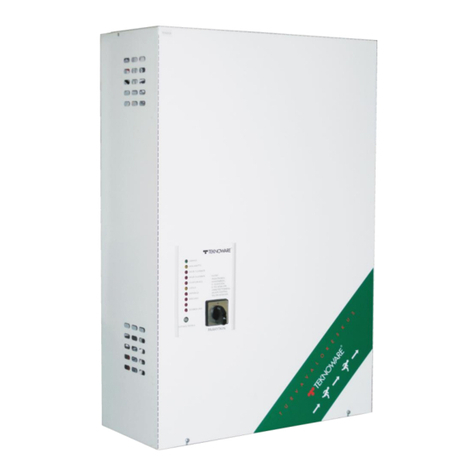
Teknoware
Teknoware TKT65 B Series Installation and maintenance instructions
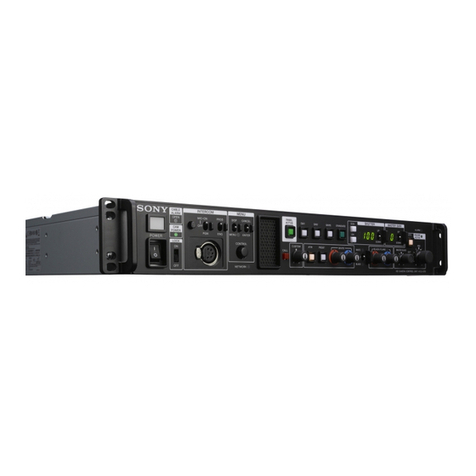
Sony
Sony Exmor HXCU-D70 operating instructions

MRMC
MRMC MRMC-1166-02 quick start guide
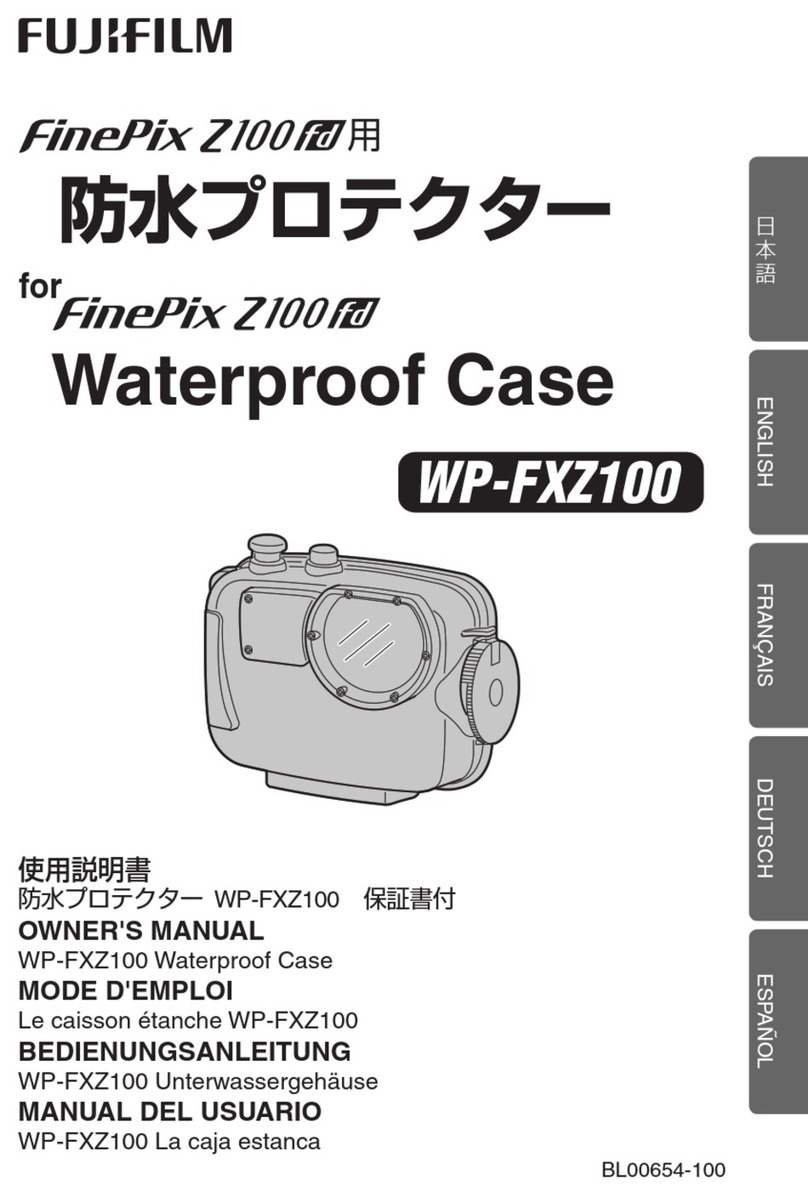
FujiFilm
FujiFilm WP-FZX100 owner's manual

Teknoware
Teknoware TKT68C Installation and maintenance instructions
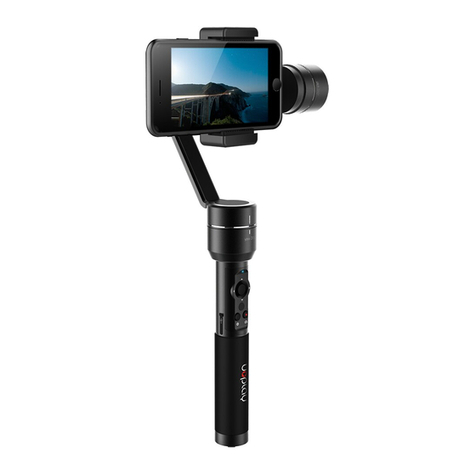
Aibird
Aibird uoplay 2 user guide

